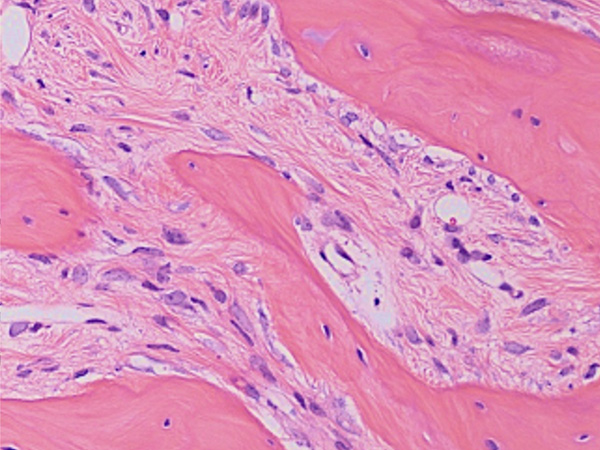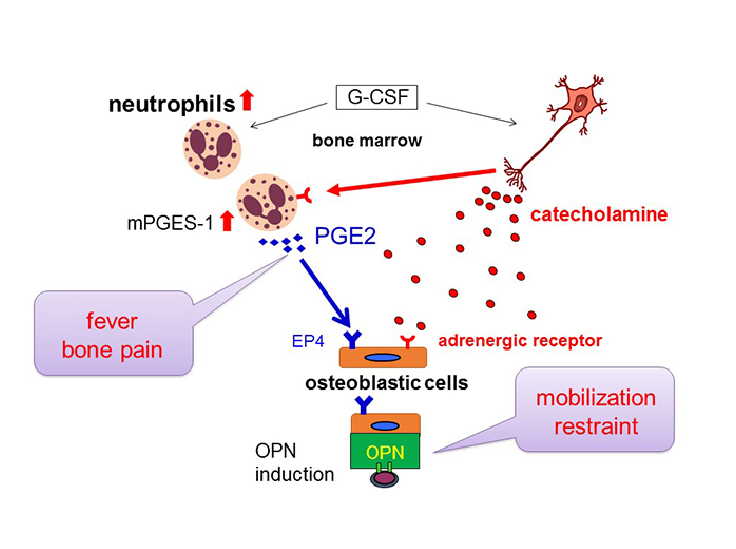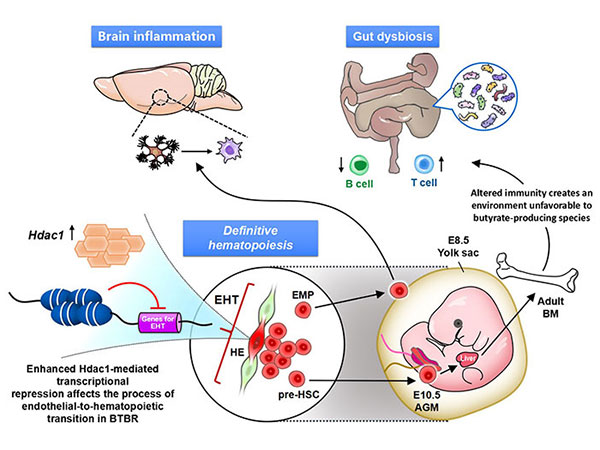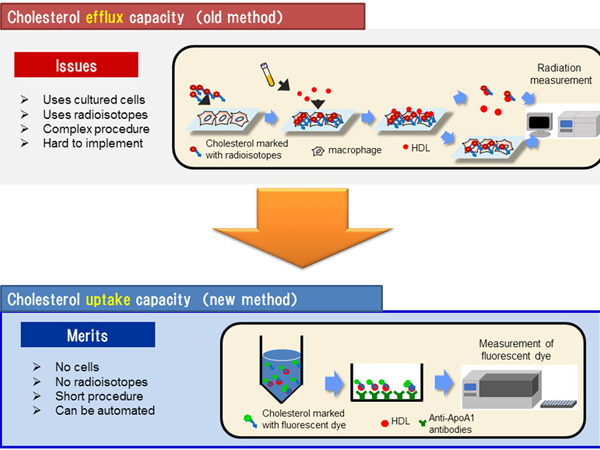A Kobe University research group including graduate student ISHII Shinichi and Associate Professor KATAYAMA Yoshio (both of the Department of Hematology, Graduate School of Medicine) have discovered that fibroblast growth factor-23 (FGF23) produced by erythroblasts (cells that are the precursors of red blood cells) promotes the movement (mobilization) of hematopoietic stem cells(*1) into the peripheral blood. Up until now, FGF23 has been known for the role it plays in the kidneys as a hormone which regulates phosphate concentrations throughout the body.
It is hoped that this discovery will enable new strategies to be developed for harvesting hematopoietic stem cells from bone marrow transplant donors.
These research results were given advanced online publication in the American scientific journal ‘blood’ on December 23, 2020, prior to the printed version.
Main points
- FGF23 is mainly produced by bone-embedded osteocytes, however this research revealed that the hormone is also produced by erythroblasts located in the bone marrow.
- This erythroblastic production of FGF23 was triggered by low oxygen levels (hypoxia) in the bone marrow, which resulted from G-CSF(*2) administration. G-CSF is utilized medically to induce cell mobilization.
- It was revealed that this high concentration of FGF23 in the bone marrow promoted mobilization of hematopoietic stem cells by suppressing the function of chemokine receptors, which retain these cells in the bone marrow.
Research Background
According to the textbook definition, fibroblast growth factor-23 is a hormone that is produced by bone-embedded osteocytes and regulates phosphate homeostasis in the kidneys. It is widely known that overproduction of FGF23 results in hereditary hypophosphatemic rickets (otherwise known as vitamin D-resistant rickets) and this can be treated with antibody-based drugs that target FGF23. In recent years, FGF23 has also been used as an indicator of chronic renal failure. However, the effect of FGF23 on bone marrow cells had not yet been clarified.
In order to perform bone marrow transplants, it is necessary to collect hematopoietic stem cells from a donor. Nowadays, G-CSF and Plerixafor (which is a CXCR4 chemokine receptor antagonist) are widely administered to donors in order to cause hematopoietic stem cells to be released from the bone marrow and into the peripheral blood. This makes it possible to harvest the stem cells from the blood, which is safer and less invasive than harvesting them from the bone marrow. However up until now, the mechanism behind this mobilization was only partially understood.
Research Findings
First of all, the research group discovered that when G-CSF was administered to mice, production of FGF23 in the bone marrow greatly increased. Subsequent cell analysis revealed that FGF23 was produced by the majority of erythroblasts inside the bone marrow. Erythroblasts are the precursors of red blood cells.
G-CSF administration and the subsequent stimulation of the sympathetic nerves resulted in low oxygen levels inside the bone marrow. It became clear that FGF23 was ejected from the erythroblasts into the bone marrow as a result of this induced hypoxia. A surprisingly high concentration of FGF23 was released in the bone marrow as a result of G-CSF administration (approx. 20,000 times higher than the concentration in the peripheral blood). It was subsequently revealed that this elevated concentration weakened the anchor molecules (in this case, the chemokine receptor CXCR4) which are responsible for the bone marrow’s retention of hematopoietic stem cells, thus causing these stem cells to move (mobilize) out of the bone marrow and into the peripheral blood.
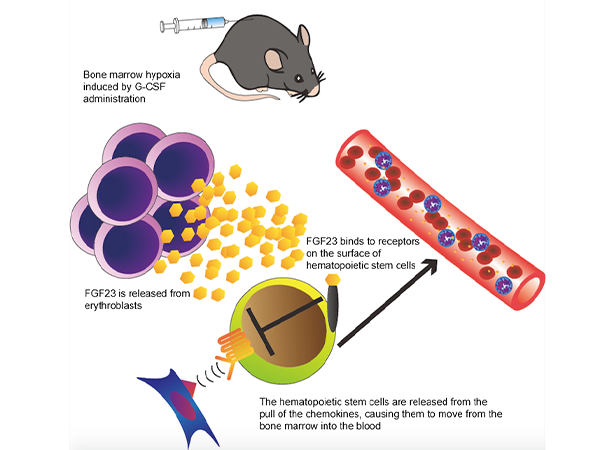
Further Developments
It is necessary for bone marrow transplant donors to receive a series of injections beforehand that cause hematopoietic stem cells to be released into the peripheral blood so that these stem cells can then be harvested. However, in around 10% of cases this doesn’t occur correctly (insufficient mobilization). These research findings are expected to contribute towards resolving this issue, hopefully enabling new strategies to be created.
Glossary
- *1 Hematopoietic stem cells
- These are cells in the bone marrow that are responsible for producing blood cells.
- *2 G-CSF
- G-CSF stands for granulocyte colony-stimulating factor. It is used medicinally to stimulate an increase of neutrophils, which are an essential part of the body’s immune system.
Journal Information
- Title
- “FGF23 from erythroblasts promotes hematopoietic progenitor mobilization”
- DOI
- 10.1182/blood.2020007172
- Authors
- Shinichi Ishii, Tomohide Suzuki, Kanako Wakahashi, Noboru Asada, Yuko Kawano, Hiroki Kawano, Akiko Sada, Kentaro Minagawa, Yukio Nakamura, Seiya Mizuno, Satoru Takahashi, Toshimitsu Matsui, Yoshio Katayama
- Journal
- blood(The official journal of the American Society of Hematology)





